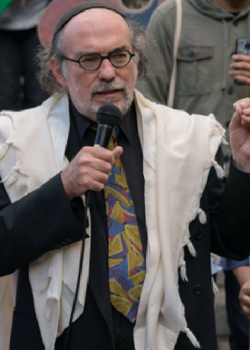When my kids were younger, they used to have their own version of the song that is traditionally sung during the havdalah ceremony at the end of Shabbat. After we had made the blessings over the spices, the candles and the wine we would sing:
Eliyahu hanavi, Eliyahu hatishbi, Eliyahu hagiladi.
(Elijah the prophet, Elijah the Tishbite, Elijah of Gilead)
Here the traditional lyrics continue:
Bimherah yavo eleinu im mashiach ben David
(May he come to us quickly with the messiah son of David)
However, my kids would instead continue:
Eliyahu hanavi I wanna watch TV.
For them the marker between Shabbat and the weekday at that moment was that when we finished the havdalah, literally the differentiation, they would be able to watch TV again. (Nowadays they would have to rhyme Eliyahu hanavi with "hulu.com" or "internet," which would and does present other challenges.) This boundary was clear and non-permeable. On one side was Shabbat (on which, besides non-TV watching, there were joyous meals with friends and davening with our community), on the other was the week and TV.
Shabbat is all about boundaries. It is bounded so that everything that happens within those boundaries of time and especially space is Shabbat. Once the boundaries are laid down, all activities, prosaic or special, profane or sacred are Shabbat activities. One of the ways that we signal to ourselves the beginning and end of that space and time is by candle lighting before and after. Each year there is at least one and sometimes two Shabbatot that coincide with Hanukkah. This gives us an opportunity to think about the meaning of the light and lighting of Hanukkah candles on the background of the light and lighting of Shabbat candles.
The baseline distinction between Hanukkah candles and Shabbat candles is that Hanukkah candles cannot be used for anything, while Shabbat candles are specifically to be used. We add a candle to our menorahs (the so-called shamash or helper candle) so that if we need to use the light of the menorah, we will be using the light of a non-Hanukkah candle, the helper candle. On the other hand, the whole purpose of the Shabbat candles is to provide light so that, in the days before electricity, people would not be tripping over each other and could enjoy their Shabbat meals even at night. For this reason we do not use one Hanukkah light to kindle another. We use the shamash since we are not allowed to make use of the lights even for the purpose of lighting another candle. This is not true of Shabbat candles.
The second distinction between Shabbat and Hanukkah candles is that the former are lit inside the house, often on the table at which we eat. Hanukkah candles are lit facing the street. Optimally, the Hanukkah candles are lit outside the door, but also in a window. The legal discussions make it clear that, in order to fulfill the commandment, the Hanukkah lights must be burning so that others can see them outside the house and, optimally, at a time when others could see them - that is when people are going home and not after they are already ensconced in their homes.
As boundary markers, the Shabbat candles signal that a period of intense Jewish sacred time is approaching. It is a time when we live in a Shabbat world even when we are seemingly doing ordinary activities, such as walking or reading. The Hanukkah candles are placed on the boundary with outside in order to shine both inwards and outwards. Since the candles themselves are pure signs - they are not there for any reason other than to bring light to the world, to announce the miraculous resilience of holy light after and beyond oppression - they erase the boundaries on which they rest. The candles are explicitly intended for the world outside as much as for the world inside.
On Shabbat Hanukkah we navigate this line between bringing light to the world and retreating into our own world. First we light the Hanukkah candles, making sure that they will burn well into the night so that people will see them. Then we light Shabbat candles, signaling that we are crossing over into Shabbat space. We reject as a false dichotomy caring for, impacting and being a part of the larger world, on the one hand, and having intentional, internal communal Shabbat space on the other. We choose, rather, to robustly embrace the tension.
Shabbat shalom.

